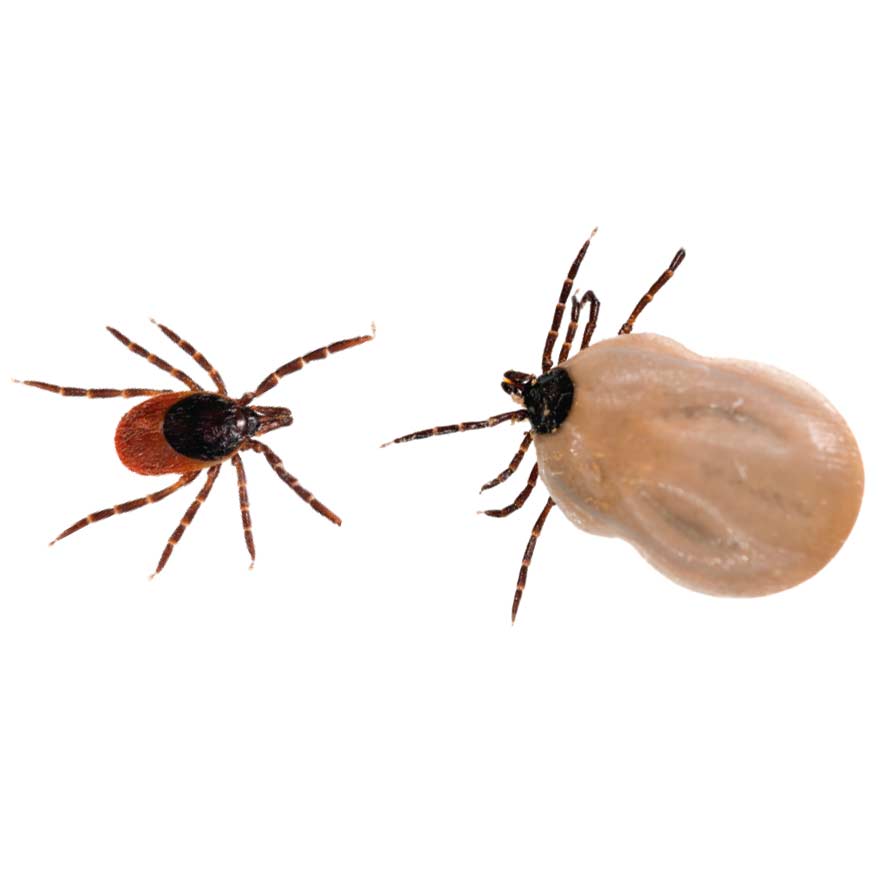
Watershed country is wide open for summer exploration. A word of caution though: we should all be aware of a nasty little blood-sucking creature that may well change our lives forever if not detected immediately. If you guessed that creature was a mosquito, perhaps a deer fly or black fly, you’d be wrong. They are all insects, and the critter I’m referring to is an arachnid, and no, not a spider but the nefarious black-legged tick.
The black-legged tick has found its way into Ontario, bringing Lyme disease with it.
Lyme disease can only be transmitted via the bite of an infected black-legged tick. Actually, the process is more akin to a boring procedure than a bite. The tick starts by drilling a tiny hole in our skin with its mandibles and injecting a numbing venom. Once the parasite hits paydirt – our blood – it adds an anticoagulant to prevent it from clotting. When a satisfactory blood flow is established, the tick secretes a third compound that creates a concrete- like substance around the hole to maintain the blood flow, much like a well casing. It usually takes 24 hours or more for this little vampire to complete the process. Lyme disease is caused by the bacteria in the chemicals secreted into our bodies from the infected black-legged tick.
Lyme disease is preventable, and a few simple precautions can reduce the risk of infection. A blacklegged tick needs to be attached to the body for at least 24 hours to pass on Lyme disease, so early detection is critical. Immediately following a walk in the woods or the fields, strip down and thoroughly examine your body for ticks. A tick in the nymph stage is tiny – very, very tiny. These little fellers are as small as the head of a pin and can be just as infectious as the full-grown tick. Ticks prefer warm areas of the body, so places like armpits and so on must be checked. If you find an embedded tick, remove it with tweezers by grasping its body as close to the skin as possible and firmly and slowly pull the tick out. Do not twist nor jerk it out. Apply rubbing alcohol to the bite site. Examine the wound carefully and ensure the head comes out with the tick. If there’s a chance the tick has been embedded for more than a day, save it and seek medical attention. Insect repellents and a roll of duct tape are the first line of defence in keeping the critters off our bodies and clothing. Prior to heading out, treat your clothing and skin with insect repellent. Products containing Deet or picaridin repel black-legged ticks. Tucking your pant legs into your socks and wrapping them with duct tape ensures the ticks can’t get beyond your clothing. Taping your shirt or jacket cuffs and collars to turtlenecks as well makes you safe without the use of chemical repellents. Ticks are also cat and dog lovers and eagerly attach themselves to our pets. Check Rover and Tabby, even if they are “in town” pets.
Lyme disease can be prevented and looked after with early medical intervention, but left untreated, it can affect heart and brain functions and cause a long list of chronic neurologic symptoms.
Knowledge and education are the key to keeping this evil little arachnid at bay. For me it is simple. Just the thought of a creature boring holes in my body, embedding itself whilst injecting three different venoms possibly containing pathogens into my blood stream is enough motivation for me to take all the necessary precautions. (Even COVID doesn’t seem so bad.)
Story by:
Roger Thomas




